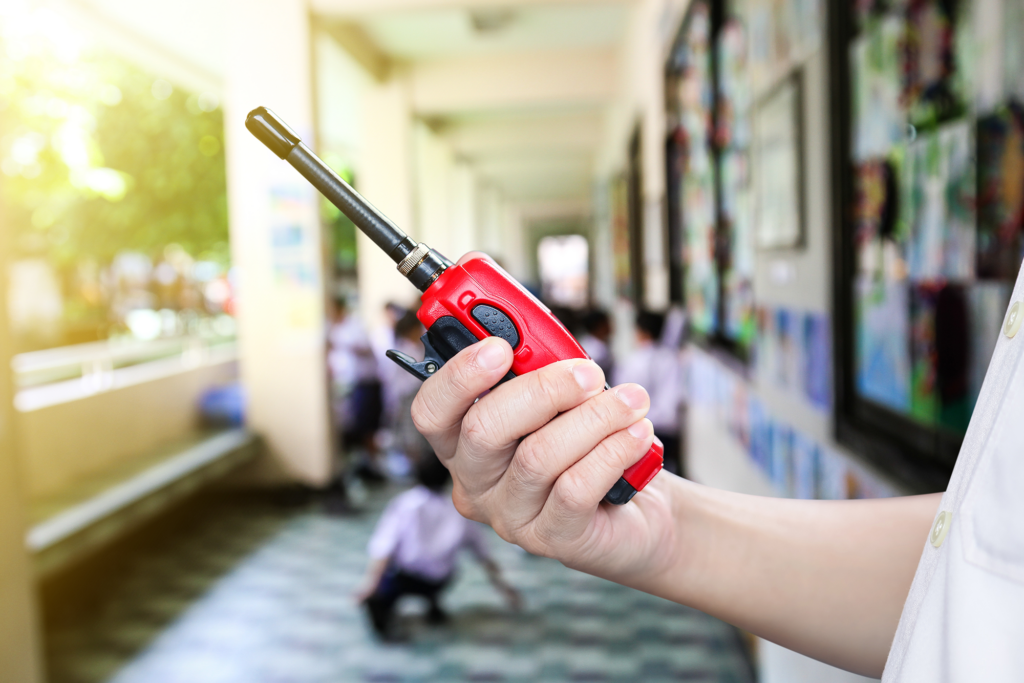Effective Communication During Emergencies: School Alert Systems

Protecting your K-12 community from potential threats – active shooters, severe weather, health outbreaks, and more – is always a top priority. The right school alert systems can provide effective communication to your community during emergencies.
Some states have recently enacted legislation, such as the Texas Silent Panic Alert Technology (Alyssa’s Law), that requires silent panic alert technology in classrooms beginning with the 2025-2026 school year.
Because communication, such as a PA system or text messages, can be unreliable during an emergency NFPA 72 Chapter 24 recommends using at least two of the four layers to alert people of an emergency:
Indoor
Outdoor
Personal
Public
While the news often focuses on extreme safety incidents in schools – such as active shooters, neighborhood threats, everyday incident responses to medical and behavior situations are common.
Here are the items to consider when selecting which combination of alert systems will work best for your district:
Consider all types of emergencies
K-12 campuses and districts face a variety of health and safety incidents every day. Accidental injuries, fights, weather incidents, and fires are common events that require rapid responses and sometimes save lives.
Available Everywhere to Everyone
An emergency notification system can only save lives if it is available. Staff must be able to request help or initiate a lockdown from anywhere on campus, whether it is in the classroom, the playground, the parking lot, or the stadium. As the Center for Homeland Defense and Security has reported, nearly half of school shootings occurred outside the school building. Accidents, injuries, fights, and other emergencies occur in all corners of the school grounds.
Simple and Fast to Use
Every second saved in an emergency — whether in requesting help or providing critical information to responders — improves the chances for a positive outcome.
Provide Precise Information
Technology can automate the rapid sharing of information critical to responders and everyone affected. Notification solutions should also pinpoint and communicate the exact location during an emergency. This is an area where technological innovation significantly advances the capabilities of school alert and notification solutions.
Communicate Clearly to Entire School Community
Schools have many ways to show and broadcast critical information to everyone who needs it during an emergency. Radios, public address systems, strobe lights, alarms, texts, computer alerts, phone alerts, overhead displays, parent notifications systems, websites, etc. Consider pre-recorded announcements specific to each type of incident to ensure a clear, complete, and concise message. It may also eliminate potential confusion or delays in a manual message, particularly if administrators are not able to get to the intercom.
Administrators often receive incident information from local authorities when they are away from the campus, so they must be able to initiate communications and proper responses to incidents remotely. Consider linking systems directly to local police, paramedics, EMTs, and other certified first responders. The key is maximizing awareness and information to all those affected.
Some questions to ask about your school emergency alert systems:
Is it accessible in an emergency to everyone at all times?
Is the system intuitive enough to use in a state of panic?
Is the solution effective for an everyday incident as well as an extreme incident?
Can it show the precise location of the incident?
Does it notify the entire school community when the campus is under threat?
Contact INSURICA to learn more about other ways to keep your schools safe.
This article is not intended to be exhaustive nor should any discussion or opinions be construed as legal advice. Readers should contact legal counsel or an insurance professional for appropriate advice.



